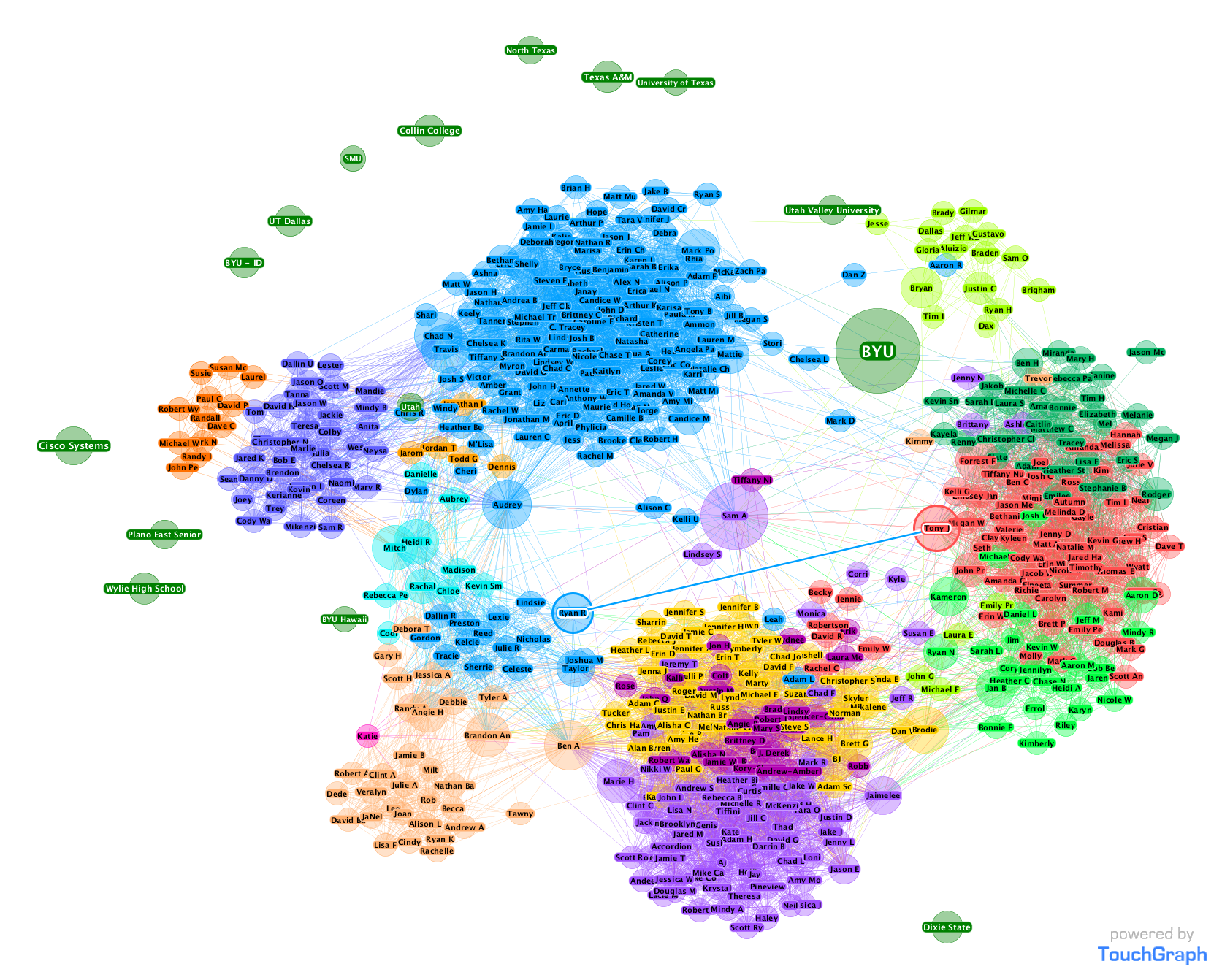“Connected” is a great overview of network theory through today’s various social networking ‘configurations’. The authors really do a great job of taking the reader along, referring to studies and statistics, but not getting over-analytical or mired in the details of those studies and statistics. The information seemed reliable, but still fun to read. This is a great quality for any book to achieve!
The chapter that stood out to me was about relationships, “Love the One Your With.” I’ve been building a hypothesis (this goes several years back into my single days) that one of the reasons why young adults are delaying marriage longer than in the past is because the percieved ‘marketplace’ of dating and marital opportunity is becoming more and more limitless. Because there are more and more vehicles (or as the authors put it, configurations) through which you can expand or alter your social network, you are led to feel dissatisfied and leave your current relationship or network of prospective relationships based on the possibility of reaching your ideal relationship partner through the now limitless opportunity of the World Wide Web. No longer is someone limited to their reachable geographical configuration; their city, county or state. Now with online presence, instant communication, and rich media (video and photos), it is possible for someone anywhere in the world to make a connection.
I came to my hypothesis by comparing my parent’s dating environment to my own. What did they have that I didn’t, and what do I have that they didn’t? Both my parents and my in-laws met in a small community of people. My in-laws went to High School together, and my parents were introduced through my father’s sister who lived down the street from my Mom. These stories seem to fit lock step with the examples in the book. I met my wife through a friend who invited her to a party at my house (though she maintains that we first met at a church dance a couple of months before). Either way, it was through a small community.
The authors of this book put a much-needed reality check on my theory. I still feel it has merits, but they pretty firmly allege that even if I were to radically alter my social network of friends, I would still likely meet my future partner 1 to 2 degrees away from my current closest friends. They seem to be rooting the present idea of an online connection in the tradition sense of a true person-to-person connection. The two have no logical difference, and behave the same in their estimation.
So after reading the chapter, I felt like a bit of cold water had been thrown on my theory. It doesn’t completely disprove my theory, because my theory centers on the person’s perception of what a change in their social network can give them. I guess I could say that the author’s findings extend my theory to say that even if you change your social network, you would have to go through several iterations of change and extension before you could truly access someone who was more than 2-3 degrees away from you in your original social network. There continues to be some truth to the theory based on my anecdotal observation of people’s continued dissatisfaction with relationships which, from the outside, look perfectly fine.
So, just for fun, and because I really dig social graphs, I decided to take a look at my updated social graph from Facebook. I think it’s very interesting how it clusters my friends by interest or background (I clearly can see the ‘phases’ of my life and the different groups of people I’ve been involved with throughout). I also like exploring who the “bridges” are between various groups, or where various groups have overlap or cross connection.

Wow. That’s very analytical and nerdy cool. So what are the small bursts of a different color within the large clusters? Like the orange within the blue? Or the one outlier pink one?